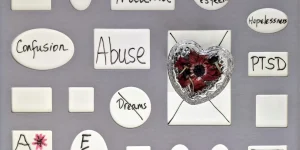4 Phases of Trauma Healing: Understanding Them, and Paving a Path to Hope
Category: Trauma
Discover the 4 phases of trauma healing—safety, processing, reconnection, and resolution. Heal from trauma and find hope.

Topic Of Discussion
The process of healing from any kind of trauma – no matter how big or small – is usually a journey. It’s bound to take time and have its setbacks. In the moments when you can’t see a light at the end of the tunnel, understanding the healing process might lead the way to feeling some hope. In other words, the more you can identify what you’re going through, the easier it might be remember that what you’re going through is normal and, with time, it will pass.
Keep in mind that everyone’s experience differs because everyone’s trauma is different, but many people go through these four phases:
Safety and stability:
Shock, disbelief, denial, or numbness are all normal, immediate reactions to experiencing trauma. Physical symptoms like rapid heartbeat, sweating, difficulty breathing, or digestive issues may occur. Feelings of anger, fear, and sadness may arise too. Once you’re in a safe location, allowing yourself to experience these reactions will help you to eventually ground yourself and stabilize.
Remembering and grieving:
In this phase, you’ll begin to process your trauma and may manage especially challenging symptoms such as flashbacks, nightmares, or intrusive images. Difficulty concentrating, irritability, sleep disturbances, or excessive startle responses may occur with these. Understandably, you may find yourself avoiding triggers or reminders of the traumatic event at this time. But hope is on the horizon…
Reconnecting and integration:
Acknowledging the trauma and its impact leads to emotional regulation during this phase, often through seeking support from a mental health professional or trusted friends and family.
Consolidation and resolution:
As a result of working through and accepting your trauma, you develop Increased resilience and can reintegrate into daily activities and relationships. By finding purpose and meaning in life, even in the face of trauma, you can fully integrate the traumatic experience into your life and move forward.
Wrapping it up
With a framework for understanding these four phases of healing, hopefully you’re better prepared for any challenges you may face along the way. And if you’re still struggling, remember that that’s normal too. Find ways not to go it alone, and seek support from friends, family, or mental health professionals like our counselors at Tri-Star Counseling.
Identify Your Trauma Learn Methods to Help Heal Start Your Healing Journey Today!
The UNSTUCK workbook is designed to help you move beyond trauma by answering key questions like, Can you get stuck at the age your trauma happened? Through guided exercises, you’ll explore different types of trauma and break free from patterns holding you back. Take the next step in your healing journey today!



